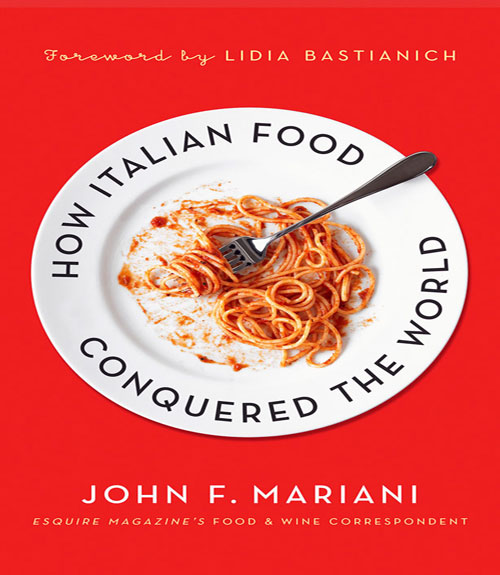
(photo: The cover of John Mariani’s How Italian Food Conquered the World.)
After reading through the first chapter of John Mariani’s How Italian Food Conquered the World I felt both enlightened and stimulated and overwhelmed and short of breath. The former feeling was a result of the numerous “fun facts” scattered throughout the first chapter ranging from the history of the restaurant in Europe to Goethe and Twain’s first impressions of Italian cuisine. The latter feelings having to do with shortness of breath and panic are centered on Mariani’s writing style; namely, a high speed data dump of both important and periphery knowledge surrounding Italian cuisine.
- The first pasta machine, referred to as ingegni, appeared in the sixteenth century and prior to the machines pasta was reserved for the wealthy given the laborious and time consuming nature of noodle making.
- Well off southern Italians (in Naples and Sicily) flavored their pasta with sugar and cinnamon, while rich Tuscans and Bolognese used eggs and saffron.
- Charles Dickens spent a year in Italy in 1844 and mentions meals of boiled cabbage and rice in Parma and vegetable soup with grated cheese, rice, and an abundance of ground black pepper. Goethe, Byron, and Shelley also spent plenty of time in Italy and while all three were extraordinary writers they neglected to mention Italian cuisines in their work (possibly because it wasn’t worth a reference).
- King Victor Emanuel II held a state dinner after Italy was unified in 1861 and the menu was in French, as was much of the food served.
- Pizza was virtually unheard of outside of Naples until the early 20th century and the typical pizza with tomato sauce and cheese wasn’t created until 1889 (named pizza alla margherita after the new queen’s visit to Naples in the same year).
Overall, Mariani offers a good, yet fragmented, history of Italian food/cuisine. I know that I’m certainly a more informed cook of Italian food having read through How Italian Food Conquered the World and I’m looking forward to sharing my new found knowledge with my next dinner guests (we’re serving Italian, of course).
Click here for reviews of other Italian themed books on Scordo.


thank-you for this book review. it would make a great gift.